Over 5 Million People Were Shocked When A Microbiologist Swabbed These Bikini Bottoms For Germs, And The Results Made Me Cringe
If you have been on TikTok, you may at some point have come across a video from @howdirtyis, an account run by microbiologist Nick Aicher, who swabs public surfaces like gas pumps, beauty testers, and changing rooms to test for bacteria. Recently, one of Nick’s videos hit my For You page with over 5.5 million views. It focuses on one thing: the hygienic liner on swimsuit bottoms.
@howdirtyis Replying to @ms.mtd88 How dirty are the swimsuits you try before you buy? #target #targetfinds #targethaul #swimsuit #swimsuitcheck #swimsuits #swimsuitshopping #swimsuitseason #science #germ #sciencebiatch #gross #nasty #howdirtyis #dirty #interesting #bacteria #sciencetok #cool #fyp #clean #foryou #micro #curious #サイエンス #科学 #実験 #バクテリア #funfact #facts #fact #germs #interestingfact #interestingfacts #amazingfact #amazingfacts #amazing #randomfacts #randomfact #randomfactsforyou #factstime #dailyfact #funfacts #factoftheday #funfactoftheday #bio #biology #biomed #lab #labwork #laboratorio #biologia #microbiologia #scitok #ScienceTok #scienceismagic #scienceiscool #sciencefair #foreigngerms #germsquad #mygerms #viral #bacterial #bacterialcontamination #petriedish #バクテリア #サイエンス #科学 #実験 #面白い #面白い動画 #viral #viralvideo #viraltiktok #trending #trendingvideo #trendingtiktok #세균 #stem #stem #stemfeed #STEMfeed #cleantok
♬ Stacy's Mom - Fountains Of Wayne
@howdirtyis / Via tiktok.com
Now, I've always been a bit skeptical about those flimsy plastic liners on swimsuit bottoms and have generally tried to avoid skin-to-skin contact with them. So I was immediately hooked and invested in finding out what specimen was going to be on these perfectly cute but possibly soiled swimsuit bottoms tested in Nick’s now-viral video.
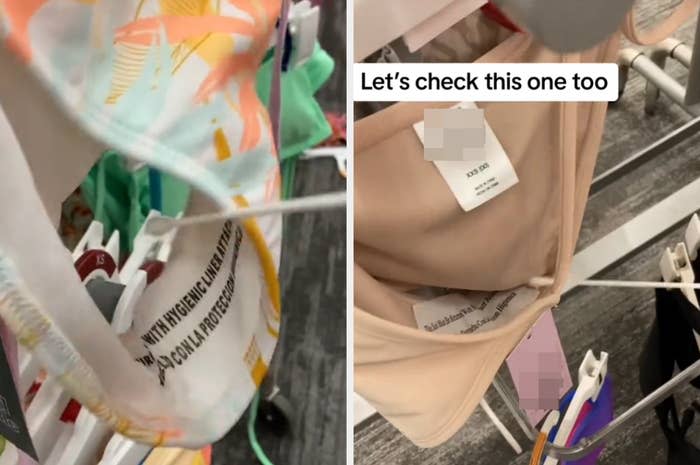
But while watching the video, I felt as if I saw my worst fears coming true. After Nick swabbed two different swimsuits, THIS is what popped up on the petri dishes:

With my untrained eye, I was spooked, and as someone else commented, I needed to know what the heck might be growing on these swimsuits.

In my quest to find out if I should avoid trying on swimsuits altogether for fear of an infection downstairs, I reached out to Kiran Krishnan, a research microbiologist who runs the account @kiranbiome, which aims to make complex science more understandable.

If the goal was to identify which microbes reside on the swimsuit liners, especially something that might cause an infection, Kiran told me that the @howdirtyis experiment was quite "simplified" and "nonscientific," so the method of collection needs to be taken with a bit of caution.
To specifically look for potentially harmful microbes, Kiran said, different techniques to isolate and identify the microbes would have needed to be employed.
For instance, there were visible flaws in the streaking process, which is when the microbiologist swabs the plate to isolate the organisms (usually bacteria) to grow them into a culture on a separate plate for identification. Kiran told BuzzFeed that because the plates were streaked on a countertop and didn't appear to be in a sterile environment, that could have opened the plates up to contamination.
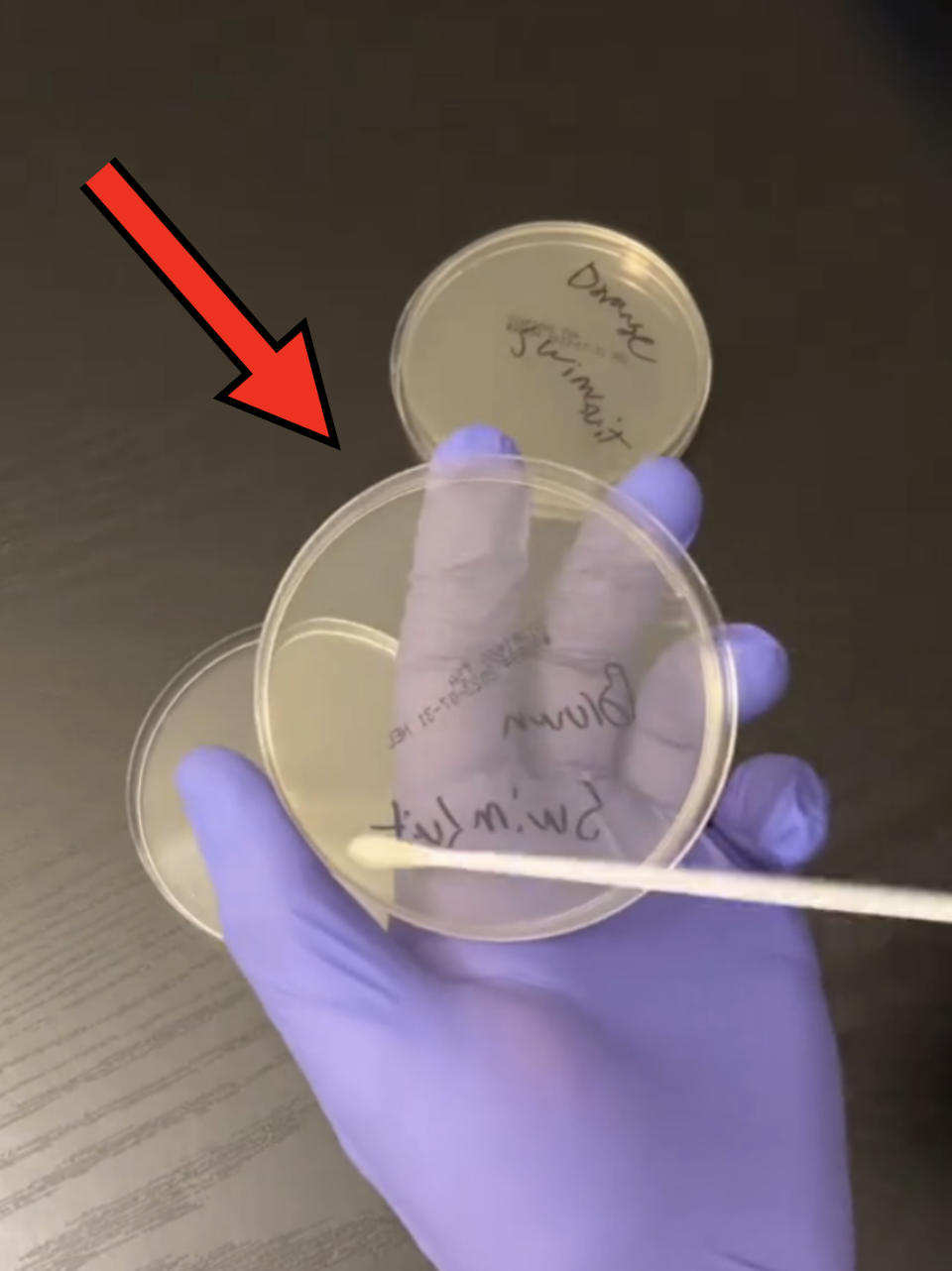
He said, "Air in any room (unless it's specifically designed as a sterile room) contains up to 1,800 different species of bacteria. The concentration of bacteria can be as high as 11 million bacteria cells per cubic meter of air. This is why microbiologists do plate streaks in a sterile hood and not on the bench top. Just exposing the plates to air for a few seconds could lead to contamination."
And in terms of the microbes found on the specific swimsuits swabbed, Kiran said that it's "a huge leap" to identify them as staph without proper testing. And just because it could be staph doesn't necessarily mean that's a bad thing. He said, "It's important to point out that many people have high concentrations of a 'friendly staph' on their skin called staph epidermidis. So it could very well be the good, friendly staph, but there is no way of knowing without selective media and isolating colonies to study the morphology."
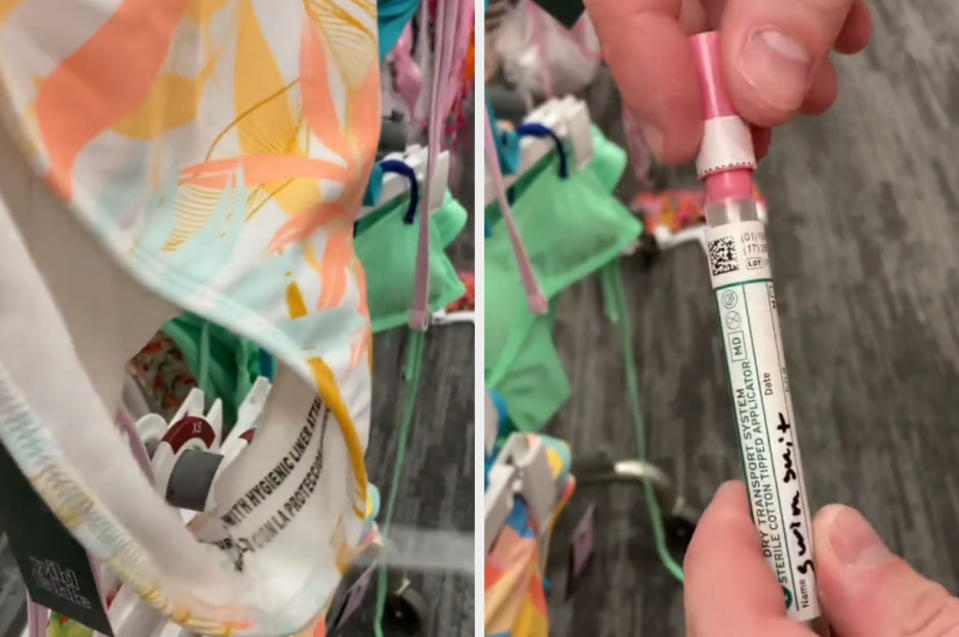
He added, "The same goes for the little pink colonies...there is a remote chance that it’s harmful, but most likely, these are commonly found bacteria on all surfaces."
And Kiran reassured me that it's "very unlikely" that @howdirtyis's swabbed findings posed any real health threat. He said, "The microbes found should not indicate any greater threat than simply walking through the store, touching a door, pushing the elevator button, or trying on any other types of clothing."
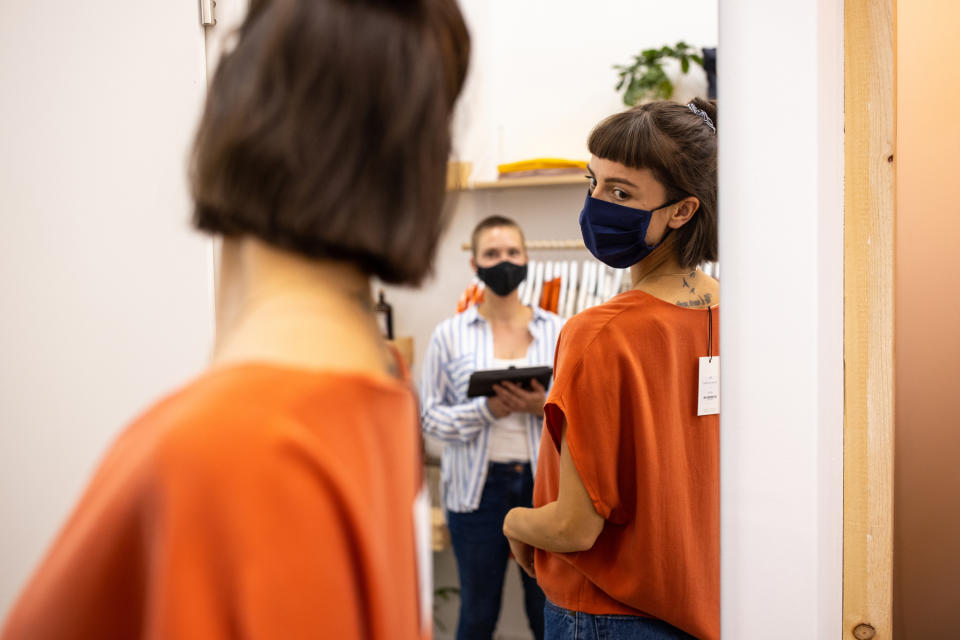
Similarly, despite the alarming video, Nick, the microbiologist behind @howdirtyis, also said that a health threat would be "very unlikely." He told BuzzFeed, "The human body is extremely tough, and most staph is pretty benign. The plate would look about the same if I swabbed someone’s arm."
In general, Kiran added that there would be "a remote chance" that someone could catch an infection, including a sexually transmitted one, from swimsuit bottoms in a store. Instead, he said, a bigger concern would be coming in contact with an antibiotic-resistant bacteria, such as MRSA.
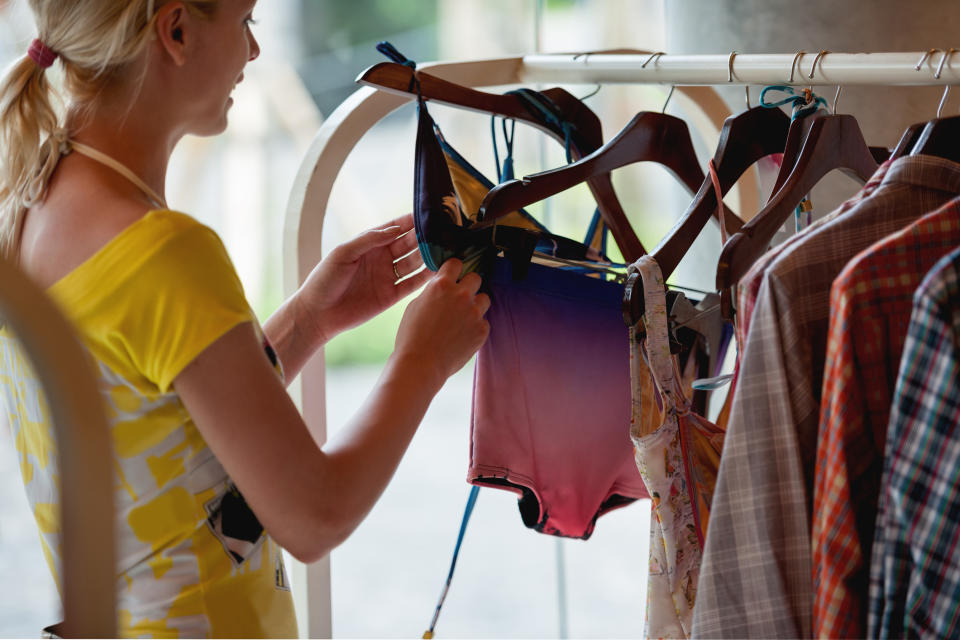
He said, "If somehow an adequate amount of MRSA got on the swimsuit bottom from someone else handling it or wearing it, then you try it on and you happen to have a cut or break in your skin where the MRSA comes in contact with your body, there is a chance it can infect. The risk would be increased if the person getting exposure were immunocompromised."
Overall, though, Kiran says this: "We live in a world of bacteria. It’s perfectly good and helpful to the system to encounter bacteria constantly. It is no surprise at all that bacteria was found on the swimsuit bottom. In fact, I would be highly concerned if no bacteria was found on it. That would mean there is some harsh chemistry in the material that will likely be damaging to the sensitive skin the swim bottom covers. In fact, hyper-sterility is a bigger health issue than exposure to ubiquitous bacteria in the outside world."

But if you are going to try on swimsuit bottoms before you buy, Kiran said it's best to still "be very cautious" and put them on over your underwear. He said, "With that, you would be completely protected and fine. Your healthy skin is a good barrier and protects you from infections. If your skin is broken from a rash or other disturbances, perhaps hold off on trying anything on until your skin is restored."

So there you have it! While it's certainly interesting to see what kinds of microorganisms are on public services, it's not always a bad thing. Use caution, wash your hands, and please keep your underwear on if you're trying on swimsuit bottoms. Happy end of summer, y'all!


 Yahoo Lifestyle
Yahoo Lifestyle 
